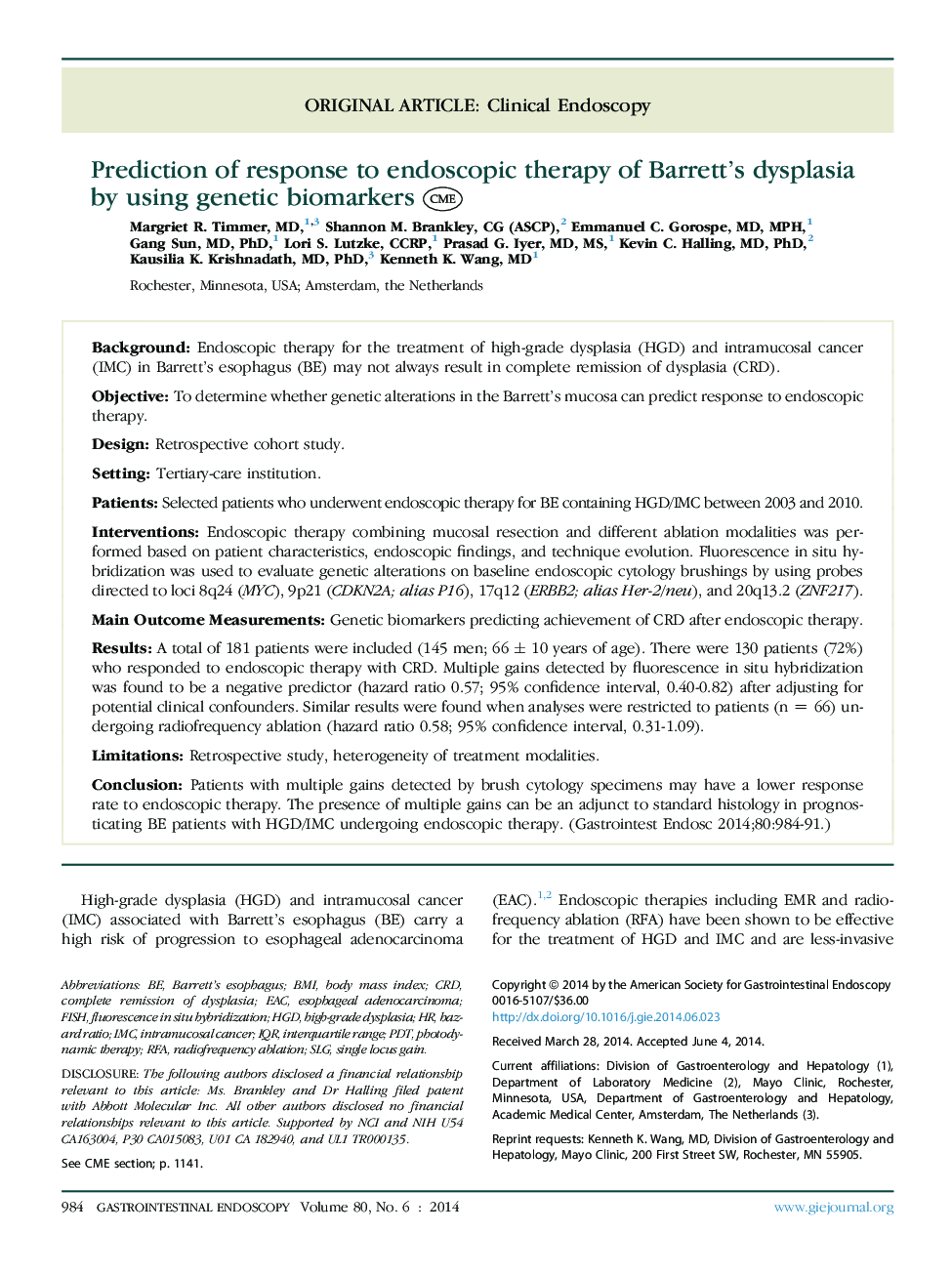| Article ID | Journal | Published Year | Pages | File Type |
|---|---|---|---|---|
| 3302693 | Gastrointestinal Endoscopy | 2014 | 8 Pages |
BackgroundEndoscopic therapy for the treatment of high-grade dysplasia (HGD) and intramucosal cancer (IMC) in Barrett’s esophagus (BE) may not always result in complete remission of dysplasia (CRD).ObjectiveTo determine whether genetic alterations in the Barrett’s mucosa can predict response to endoscopic therapy.DesignRetrospective cohort study.SettingTertiary-care institution.PatientsSelected patients who underwent endoscopic therapy for BE containing HGD/IMC between 2003 and 2010.InterventionsEndoscopic therapy combining mucosal resection and different ablation modalities was performed based on patient characteristics, endoscopic findings, and technique evolution. Fluorescence in situ hybridization was used to evaluate genetic alterations on baseline endoscopic cytology brushings by using probes directed to loci 8q24 (MYC), 9p21 (CDKN2A; alias P16), 17q12 (ERBB2; alias Her-2/neu), and 20q13.2 (ZNF217).Main Outcome MeasurementsGenetic biomarkers predicting achievement of CRD after endoscopic therapy.ResultsA total of 181 patients were included (145 men; 66 ± 10 years of age). There were 130 patients (72%) who responded to endoscopic therapy with CRD. Multiple gains detected by fluorescence in situ hybridization was found to be a negative predictor (hazard ratio 0.57; 95% confidence interval, 0.40-0.82) after adjusting for potential clinical confounders. Similar results were found when analyses were restricted to patients (n = 66) undergoing radiofrequency ablation (hazard ratio 0.58; 95% confidence interval, 0.31-1.09).LimitationsRetrospective study, heterogeneity of treatment modalities.ConclusionPatients with multiple gains detected by brush cytology specimens may have a lower response rate to endoscopic therapy. The presence of multiple gains can be an adjunct to standard histology in prognosticating BE patients with HGD/IMC undergoing endoscopic therapy.
